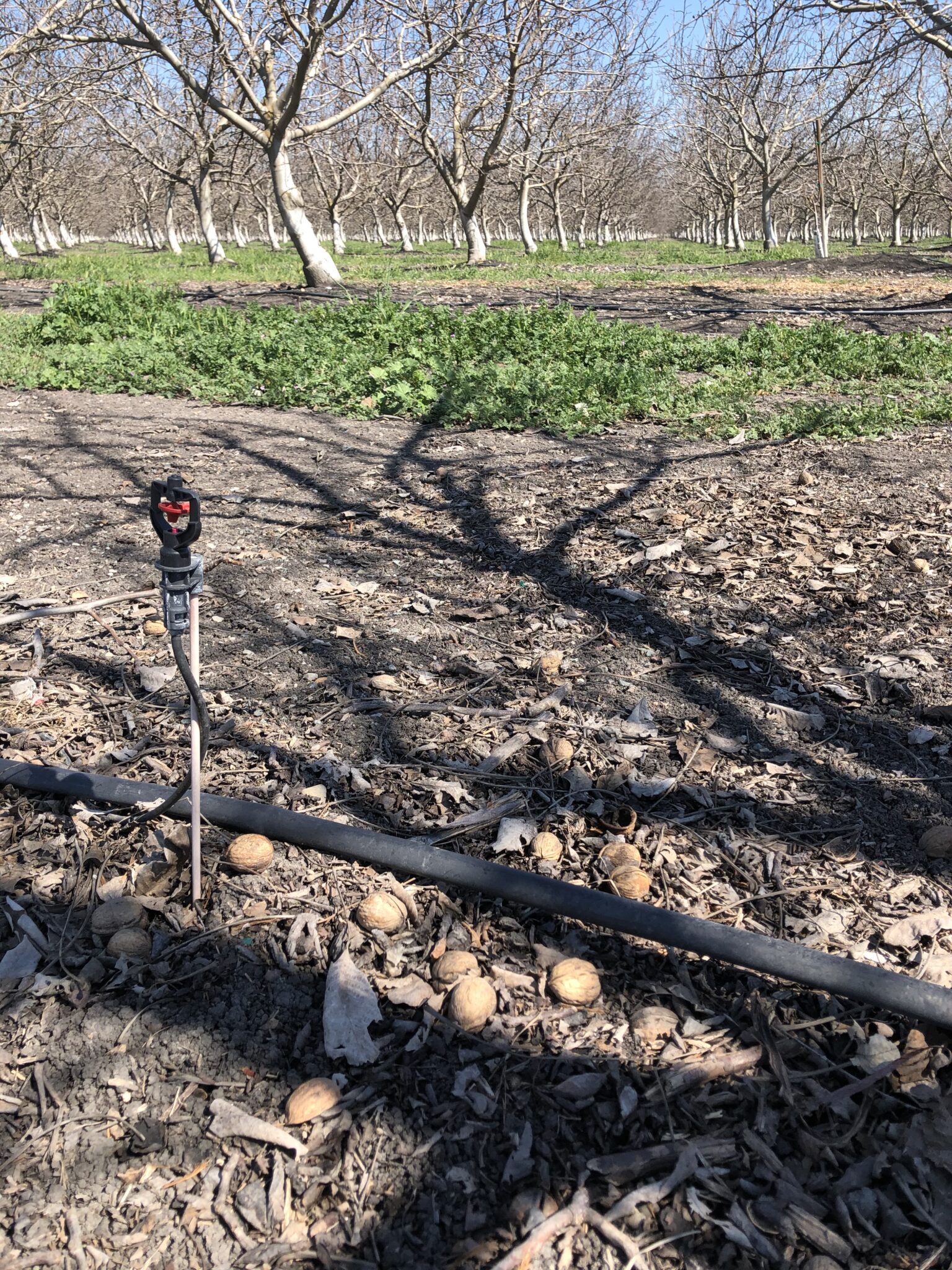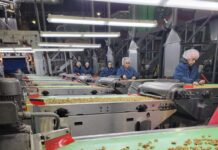
Navel orangeworm (NOW) continues to be problematic for California walnut growers. Jhalendra Rijal, UCCE area IPM advisor for Northern San Joaquin Valley, said NOW pressure varies among orchards, but with the drier winter and spring in 2021, as expected there has been increased activity with NOW in walnuts and almonds.
“From a walnut perspective, if you think about navel orangeworm right now (June), the flight may or may not matter too much unless there are blighted or codling moth-damaged nuts in the orchard,” Rijal said, noting that the third and/or fourth flight is a greater concern for walnuts at husk split.
Higher Pressures
“I would say that overall, the numbers and then the pressure are higher, but sometimes it may not mean too much,” he said, adding growers just need to wait, and watch, and see how that will relate in terms of the husk split timing.
The dry conditions in 2021 are certainly more favorable for survival of the NOW overwintering larvae whether the walnuts are on the tree or the ground, Rijal said, adding drier conditions probably play a role in overall NOW survival.
“We know navel orangeworm will overwinter in mummy nuts, whether it’s almonds, or walnuts, or pistachios,” Rijal said, adding rain in the wintertime likely has some impacts on NOW mortality.
Codling moth and blight damage in walnuts can leave openings for NOW for the first and second flights. An important management aspect of navel orangeworm in walnuts is to stay on top of these diseases and pests, Rijal said.
Nuts that have been damaged by walnut blight, sunburn, codling moth or have been mechanically injured are the nuts that the first and second flight rely on to build their populations, Rijal said.
“That is definitely the critical factor in terms of building navel orangeworm populations going into that third flight,” Rijal said.
Wait to Treat
For walnuts, the first two flights are not as significant as the third flight and the fourth flight for late season walnuts, Rijal said.
The third flight is of most concern, Rijal said, and timing of the flight and husk split is critical, which is why it’s important to track NOW flights.
If there are almonds or pistachios nearby, this can increase the pressure as all of them are hosts for NOW. “They (NOW) can move from one host to another host when they have the opportunity,” he said. “If you have an almond orchard next to a walnut orchard you’ll likely have more navel orangeworm flying around in the area compared to not having that.”
“It is not recommended to apply insecticides against navel orangeworm for the first and second flights,” Rijal said, adding these flights aren’t damaging to healthy walnuts.
“I would say that it’s not worth the money or effort to do an insecticide spray before that third flight,” he said, unless the grower has had consistent NOW pressure and damage in previous years.
Using chemical applications when needed is an important part of preventing resistance from building in all nuts as very limited insecticide active ingredients are available to use, Rijal said.
“We want to save those materials for the late-season window when the walnuts are susceptible,” Rijal said, plus it’s more economical, too, as these aren’t inexpensive materials.
Cultural Control
Winter sanitation is the best cultural control option at this point for managing NOW. Going into the season with a clean orchard means there will be less NOW pressure at the start of the season and less in-season, too, Rijal said.
It’s not just the nuts on the tree, but also the nuts on the ground that need to be removed, Rijal said.
“If navel orangeworm could not find mummy nuts or damaged nuts to lay their eggs, they lay eggs on the nuts that are still on the ground,” he said.
“Early harvest is also a very good tool, especially when there is late season harvest and harvest is dragged out for a longer time,” he continued, adding an earlier harvest could protect the nuts from later generations of NOW damage.
For early harvest, Ethephon can be used in walnuts to advance and synchronize the harvest, and it should be helpful when NOW populations are high. Ethephon should be applied at the right stage of the walnut maturity. UC IPM Guidelines recommend applying 10 to 14 days before normal harvest for one shake walnuts (www2.ipm.ucanr.edu/agriculture/walnut/Using-Ethephon/).
An earlier harvest can potentially prevent damage from the third and fourth flights of NOW, Rijal said.
“Ethephon may not be for everybody,” Rijal cautioned, adding if the trees are stressed and are in poor health, or if the variety itself has a synchronized split, then an Ethephon application may not be necessary.
Mating Disruption
Mating disruption is also part of NOW management. Rijal and David Haviland, UCCE entomology farm advisor in Kern County, did research on mating disruption in almonds up and down the San Joaquin Valley.
This has helped increase mating disruption adoption in almonds and pistachios, Rijal said.
“We have not seen that level of adoption in walnuts,” he said, adding there could be other factors like price or the fact that walnut trees vary in size and variety, relatively smaller blocks, etc., but mating disruption is an important tool for the integrated management of NOW in walnuts, too.
Sterile insect release is another potential tool that growers might be able to use as a part of their NOW program. All nut crops are investing in research to look at the sterile insect release technique as part of an IPM tool for NOW management. However, it may take several years to develop these kinds of techniques and apply them to a real field scenario.
It’s been said time and time again, but there is no silver bullet to manage and control NOW, Rijal said, and he doesn’t see a single solution for management.
“It still will be part of the integrated pest management,” he said.
With over 2 million acres of almonds, pistachios and walnuts, plus other hosts, and multiple generations of NOW throughout California, we all know this pest is a challenging one, Rijal said.
“With the global warming and the expected increase in temperature, we’re expecting to have a consistent fifth flight in some of the southern San Joaquin Valley counties as early as 2040 based on a recent study.”
For more information, go to sciencedirect.com/science/article/pii/S0048969720361866.
“We all want a sustainable, long-term industry. The objective of the industry is to keep it sustainable for a long time, and for that, we need to adopt tools and techniques in a combined system so we don’t rely on one tool,” Rijal said.










